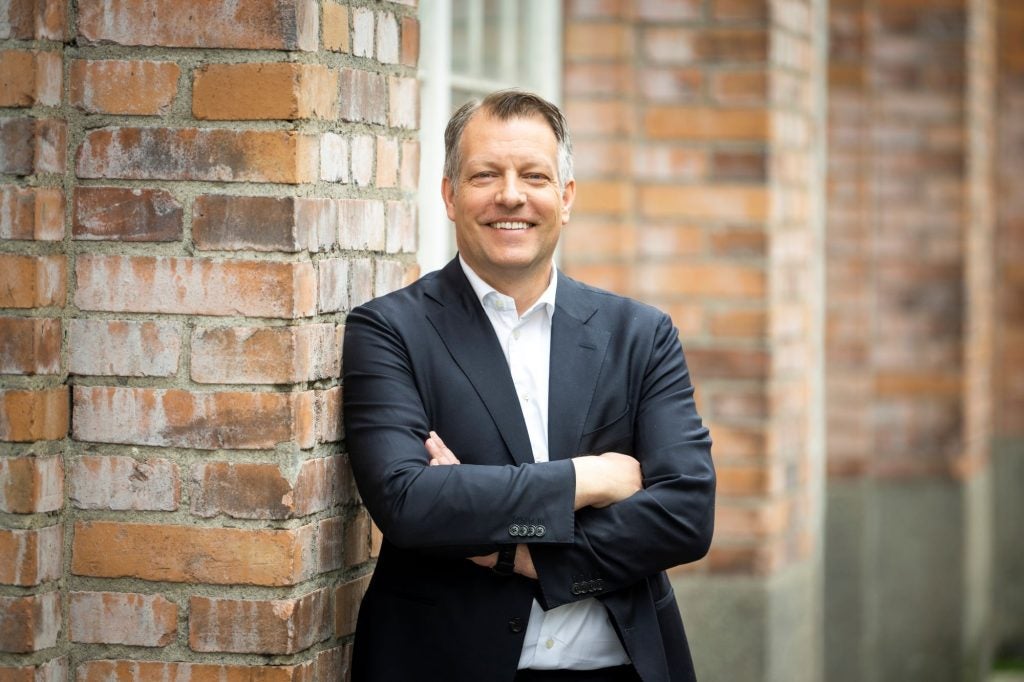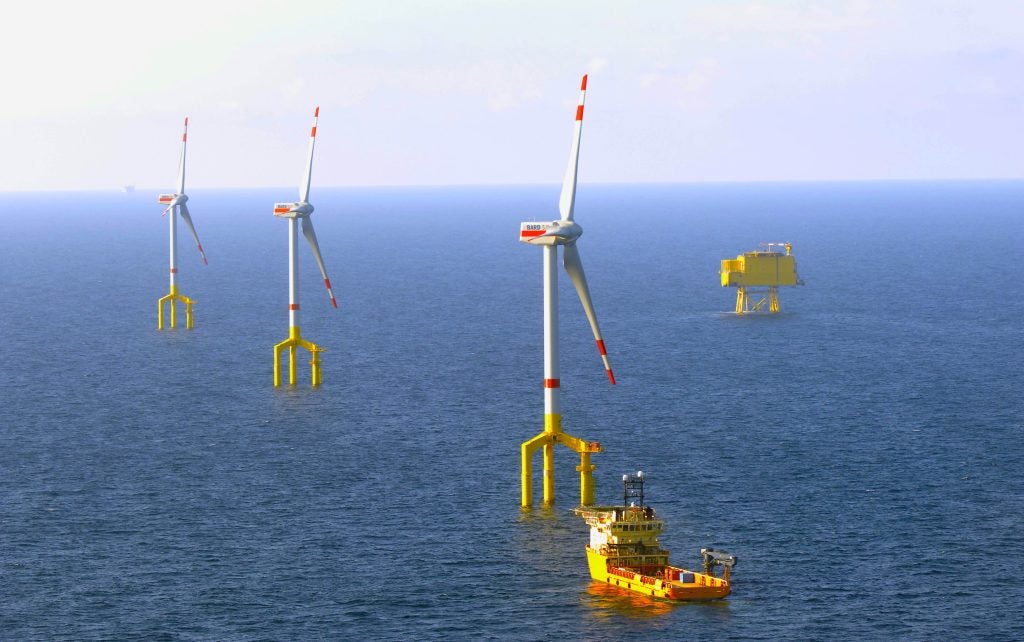
Offshore wind production in the North Sea is heralded as a key site for Europe’s energy transition. Capacity is expected to hit 212GW by 2050, in line with net zero energy targets. As offshore wind capacity expands in the North Sea, so must its associated infrastructure.
In March, Dutch grid company TenneT awarded 11 contracts worth a combined total of $25bn (€23bn) for the development of systems connecting wind farms in the North Sea to shore. One of the companies to receive a contract and create a consortium, alongside oil and gas operator Petrofac, was Hitachi Energy. The company hopes to devise 2GW grid connection systems for commissioning before 2031, which will convert AC power produced by wind turbines into DC power at onshore converter stations for general use.
Hitachi Energy and Petrofac have signed a $14.14bn (€13bn) agreement to build six different projects. Five will be connected to the Dutch grid, and one to the German grid. As TenneT seeks to transform the North Sea offshore wind area into Europe’s “green energy powerhouse”, the high-voltage DC (HVDC) project undertaken by Hitachi Energy represents a completely new business model.
Niklas Persson, managing director of Hitachi Energy’s Grid Integration business, is excited about this new direction and what it may mean for future HVDC integration.
Florence Jones: Hitachi Energy recently announced a $14bn (€13bn) agreement with TenneT to expand offshore wind capacity in the North Sea. What does this development mean for the company moving forward?
Niklas Persson: It means a lot; for us it’s a transformative way of conducting the HVDC business. In the past, we have always addressed the HVDC business on a single-opportunity basis. Quite a dramatic amount of interaction is needed for one project to come to a conclusion; that can easily take one and a half to two years. A lot of effort and resources are spent on closing only one project. So here of course TenneT, in alignment with us, have developed what we call a framework agreement. It’s really one of the first in the world in terms of the size. And what that means for us is that we have plan-ability so we can have the certainty to plan for our expansion, where it is needed. We can plan for hiring people, we can plan to retain people and we can plan to train people.

For the industry this is a remarkable step forwards, having plan-ability for such a long time and over so many projects. This gives a very good base and a foundation to drive the energy transition with certainty. In the previous ways of doing things, you were not certain, as a company, that you would be able to win a project. So, you couldn’t invest in advance, you had to invest late in the cycle. With the sheer amount of green energy that has to be integrated into the network, approaching the market in partnership, like we are doing with TenneT, is really a fundamental piece for us to be able to support the green energy transition with the speed that we need.
How well do you really know your competitors?
Access the most comprehensive Company Profiles on the market, powered by GlobalData. Save hours of research. Gain competitive edge.

Thank you!
Your download email will arrive shortly
Not ready to buy yet? Download a free sample
We are confident about the unique quality of our Company Profiles. However, we want you to make the most beneficial decision for your business, so we offer a free sample that you can download by submitting the below form
By GlobalDataWhy are developments in HVDC transformer technologies and grid integration important for the energy transition in the North Sea?
When you want to introduce green energy, except hydropower, you are dealing with intermittent power sources such as wind and solar. This means that they fluctuate a lot. […] In order to integrate the sheer amount of renewables that we need, you must strive to have as stable production as possible, which means quite far out offshore. That is also, of course, more accepted from a social perspective with people as people can’t see wind parks from shore.
But from a technical perspective, you need to stabilise both the voltage and the frequency, and HVDC is the enabler to do so. We can control and transmit power in a stable way using the HVDC converter flexibility that we have, which we call voltage source converters. Then of course you have losses, so if you are more than 100km away from shore, if you do it in AC you have much more losses and it becomes technically complicated to transport energy further out than 100km-110km. In this project we are looking at distances between 60km and 200km, depending on where you are in the North Sea. So, HVDC is the enabler to transport energy to onshore in a stable way.
Will offshore wind be a key driver in Europe’s move towards green energy?
Absolutely. The European Union has pledged more than 300GW of offshore wind- AC, DC and floating- to be integrated into the European grid in order to meet the target of 1.5⁰C increase of the ambient temperature. So offshore wind, in various shapes and forms, will be the enabler for the future energy system.

What is unique about the collaborative nature of this project? Will it set a precedent for other similar projects of this scale?
What’s unique is the framework agreement which brings certainty for us to plan, for customers to plan and to create synergies between the two. Because now we can have repeatability between projects, we can have the same design and strive to have synergies which also means from a cost perspective, it should be much more effective. Another important step is that we try to enact the green energy transition as cost effectively as possible. Of course, we are doing this in collaboration with TenneT and with our partner Petrofac […] to have all the platforms operating by 2030.
Do you think that sufficient policy support is in place for these kinds of projects, and to enable offshore wind to become a central player in the energy transition?
Today, the regulatory framework is there when it comes to point to point- one generation source out to sea, and then to one country. But, if you want to reduce the overall cost and also make it practically possible […] to integrate offshore wind to various countries, […] we need a regulatory framework for how you actually get paid for the investment, how you dispatch energy, to whom, when and for what price. […] Of course, there are some specific steps to be taken, but from a technology perspective, we are pretty confident that we can support customers to integrate this amount of energy. Now we need the regulatory framework to also support it. I know that various countries in the EU are working on this and I see this as the next step to make sure that we can transform the whole energy system.



